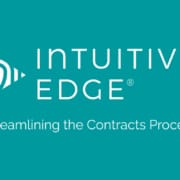M&A+ The Art After the Deal: 2024 Year in Review

This year, M&A+ The Art After the Deal podcast brought together top-tier M&A leaders, strategists, legal minds, and transformation experts to share their experiences in tackling post-deal integration, leadership, behind-the-scenes strategies, technology, and value creation. From the State Street Head of Corporate Development Head and CFO to a Pioneering Complexity IT Scientist, each guest offered unique insights, underscoring common themes while bringing diverse perspectives to the table.
Key Themes Across Episodes
The Importance of Early Integration Planning
- Keith Crawford highlighted that integration teams must get involved early to ensure long-term alignment.
- David Edgar emphasized how poor planning can erode deal value.
- John Troxel echoed this, stressing the critical role of procurement in pre-deal strategy.
People-Centric Approaches to M&A Success
- Aaron Mikulsky: “Focus on strengths within teams—people drive integration success.”
- Vidur Bhandari stressed that “People, Value Capture, and Asset Clarity” are the pillars of successful integration.
- Dr. Kevin Karlson explored employee psychology and how wellness programs during transitions impact satisfaction and retention.
Leveraging Technology and AI
- Jim Buckley: “AI and technology will transform due diligence and post-deal value creation.”
- Phil Abraham explored AI’s evolving role in streamlining complex business transformations.
- Lawrence Howorth and Peter Connor highlighted how tools like blockchain and cross-functional skills can redefine M&A strategies.
Risk Management and Compliance
- Joanne Hirase-Stacey shared best practices for compliance, identifying risks early in the deal process.
- John Shin underscored the growing importance of cybersecurity in safeguarding assets during M&A.
Value Capture and Customer Retention
- Brant Wilson provided actionable strategies for leveraging market research to retain customers post-deal.
- Vidur Bhandari and Cliff Gardner emphasized cultural fit and personalized attention as critical factors for unlocking deal value.
Guest Insights: Highlights & Links
Keith Crawford – Carve-Outs and Future Trends in Financial Services
Key Insight: Integration teams need agility and early involvement.
Jim Buckley – AI, Integration, and Endurance
Quote: “Integration is a marathon, not a sprint.”
Brant Wilson – Market Research and Customer Retention
Takeaway: Listening to customers ensures smoother M&A transitions.
Aaron Mikulsky – Leadership, Six Sigma, and Operational Excellence
Quote: “Integration is where the real work begins.”
Lawrence Howorth – Navigating Cross-Border M&A
Insight: Understanding local dynamics is essential for global success.
Peter Connor – The T-Shaped Lawyer and Legal-Business Impact
Takeaway: Lawyers must broaden their skills to add tangible business value.
John Troxel – Procurement’s Role in Value Creation
Insight: Procurement expertise unlocks deal efficiencies.
John Shin – Cybersecurity and M&A
Key Learning: Security strategies are critical for safeguarding post-deal assets.
Vidur Bhandari – People, Value Capture, and Technology
Takeaway: People-first strategies drive deal success.
David Edgar – Contracts and Integration Pitfalls
Insight: Inattention to integration planning causes value erosion.
Cliff Gardner – Cultural Fit and Advisory Focus
Quote: “Cultural alignment determines long-term success.”
Dr. Kevin Karlson – Employee Wellness and M&A Transitions
Key Learning: Paid time off and volunteering enhance employee satisfaction.
Joanne Hirase-Stacey – Compliance, Risk, and Technology
Insight: Compliance must be a priority from day one.
Phil Abraham – AI, Blockchain, and Business Transformation
Takeaway: Technology simplifies the complexity of large integrations.
Key Learnings
- Integration Begins Before Day One: Guests repeatedly stressed the need for proactive planning and alignment to avoid post-deal pitfalls.
- People are the Foundation: Employee morale, leadership, and cultural fit are non-negotiable for successful M&A execution.
- Technology Accelerates Value Creation: AI, blockchain, and analytics will dominate the future of M&A processes.
- Leadership Makes the Difference: Self-reflection, humility, and focusing on team strengths distinguish effective leaders during transitions.
Contrasting Opinions
AI’s Role in M&A:
- Jim Buckley and Phil Abraham see AI as a transformational tool.
- Vidur Bhandari emphasized that human judgment still anchors value capture.
Procurement and Timing:
- John Troxel: Procurement must lead M&A discussions early.
- Keith Crawford prioritized operational integration ahead of procurement strategy.
Employee Wellness Approaches:
- Dr. Kevin Karlson critiqued traditional wellness programs.
- Aaron Mikulsky focused on leveraging team strengths for performance.
Closing Remarks
2024 showcased how M&A is as much about people and leadership as it is about numbers and strategy. With lessons on agility, cultural alignment, and leveraging technology, this year’s insights set a clear path for achieving transitions and integration success.
About in2edge
At In2edge, we specialize in delivering hands-on solutions for post-merger integrations, carve-outs, and spin-offs. Our expertise aligns directly with the key areas highlighted by this year’s M&A+ guests: early planning, operational efficiency, people-centric strategies, and leveraging technology to drive value creation. Whether it’s managing procurement processes, building robust integration plans, or supporting leadership teams, we ensure seamless transitions that unlock long-term success.
Partner with In2edge—where M&A transition is made easy, and success is made possible.
Learn more about how we can support your next deal: email info@in2edge.com or visit our website here.
Stay tuned for 2025 as we continue exploring the art behind M&A+ transition and value creation.









 As companies undergo spin-off transitions, onboarding suppliers becomes a critical task that requires balancing immediate operational needs with long-term strategic goals. Spin-offs often need to establish independent supplier relationships swiftly, creating a unique context for supplier onboarding compared to typical scenarios. Here’s a breakdown of the key onboarding requirements, common workarounds during transitions, and how technology plays a crucial role in tracking these activities.
As companies undergo spin-off transitions, onboarding suppliers becomes a critical task that requires balancing immediate operational needs with long-term strategic goals. Spin-offs often need to establish independent supplier relationships swiftly, creating a unique context for supplier onboarding compared to typical scenarios. Here’s a breakdown of the key onboarding requirements, common workarounds during transitions, and how technology plays a crucial role in tracking these activities. The world of mergers and acquisitions (M&A) becomes significantly more complex when transactions cross international borders. On the latest podcast episode of “M&A+ The Art After the Deal,” I had the pleasure of speaking with Lawrence Howorth, an experienced global strategist, about the complexities of cross-border M&A and how companies can successfully venture into foreign markets. With his extensive background in helping U.S. companies expand internationally and assisting foreign entities in establishing a presence in the U.S., Lawrence offered invaluable insights that are crucial for businesses looking to thrive in the global marketplace.
The world of mergers and acquisitions (M&A) becomes significantly more complex when transactions cross international borders. On the latest podcast episode of “M&A+ The Art After the Deal,” I had the pleasure of speaking with Lawrence Howorth, an experienced global strategist, about the complexities of cross-border M&A and how companies can successfully venture into foreign markets. With his extensive background in helping U.S. companies expand internationally and assisting foreign entities in establishing a presence in the U.S., Lawrence offered invaluable insights that are crucial for businesses looking to thrive in the global marketplace.

